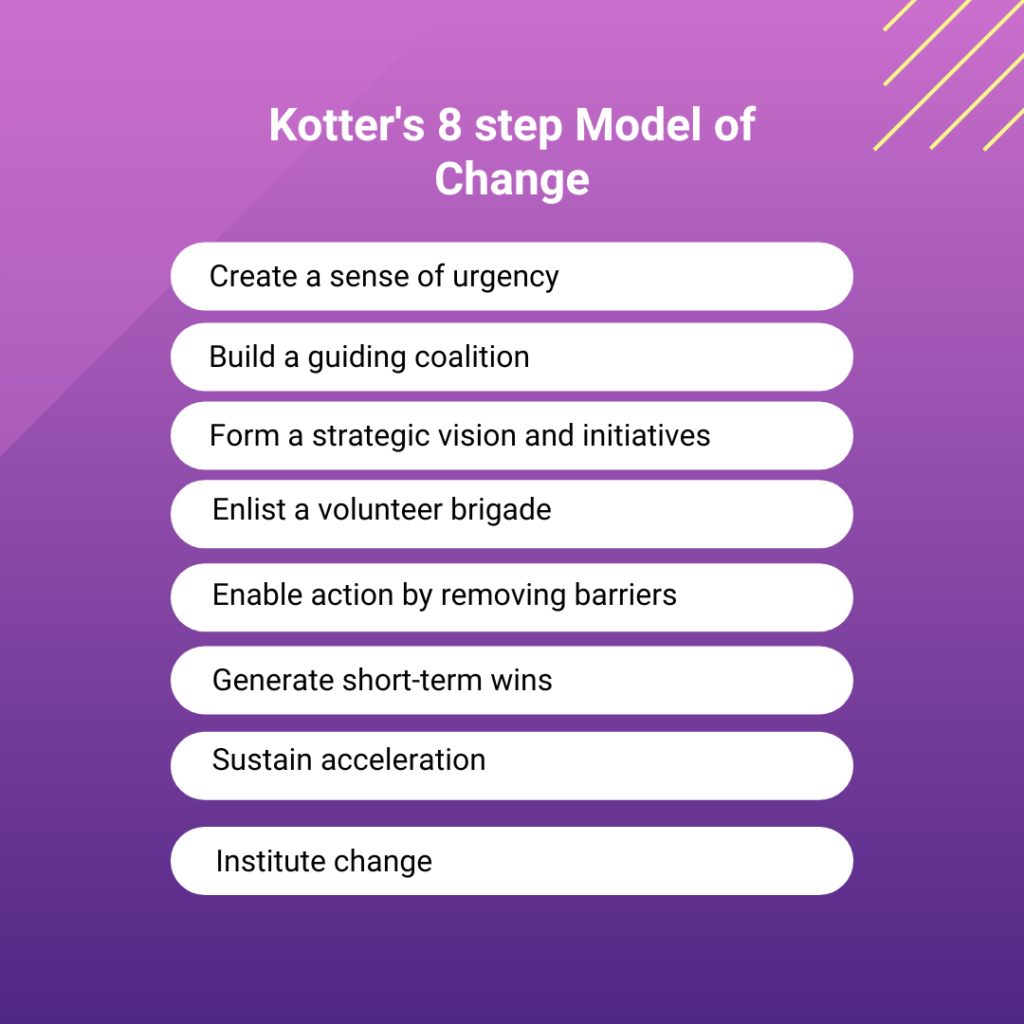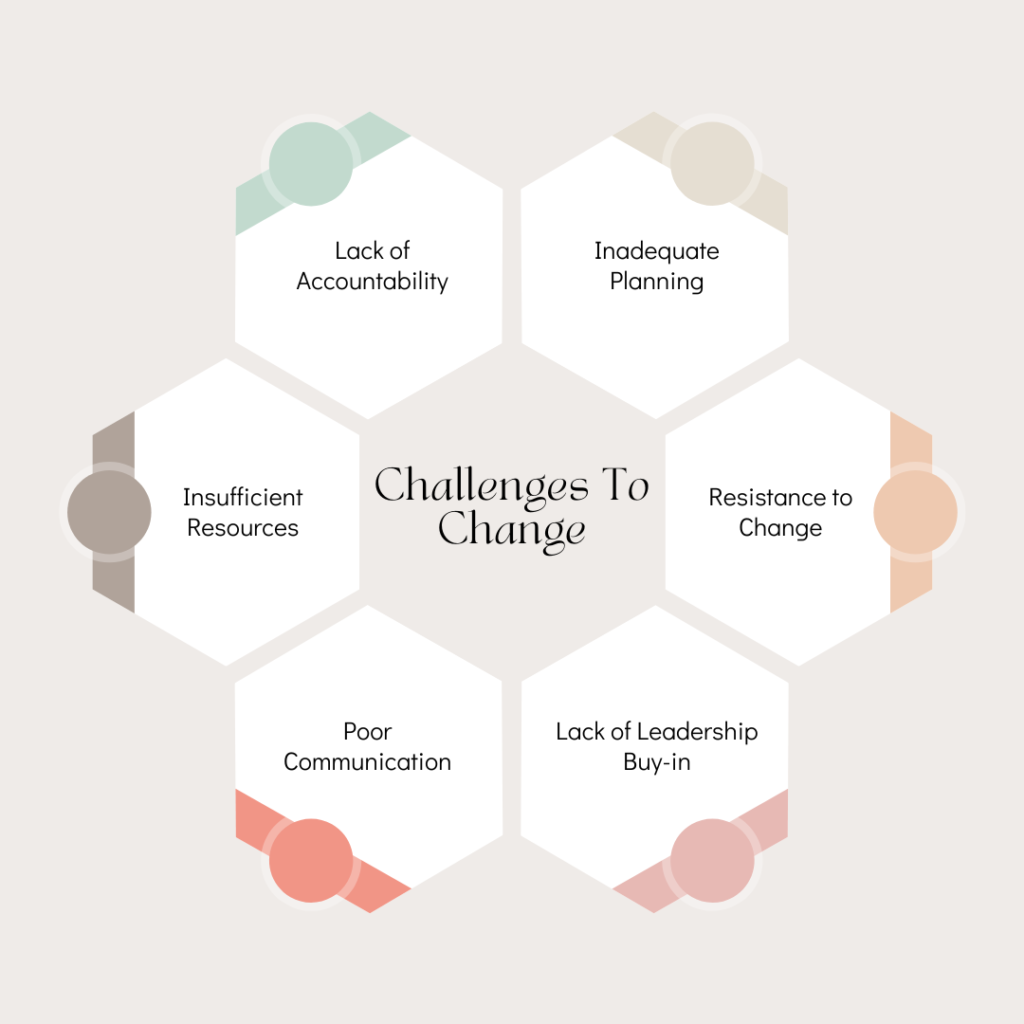Once upon a time, in a bustling city, there existed a company named ProsperCorp. It had once been a thriving organization, but over time, it had grown stagnant and struggled to adapt to the changing market landscape. The CEO, Niharika, knew that if they didn’t take immediate action, their days of success would be long gone.
But Niharika was a visionary leader who believed in the power of change. She had heard about Kotter’s 8-Step Model of Change, a framework that had helped many organizations transform and thrive. She gathered up the executives and shared her vision. Over time, the transformation efforts bore fruit and ProsperCorp regained its competitive edge, exceeded customer expectations, and became known as an innovative industry leader.
What was Kotter’s 8-Step Model of Change which ushered in 360-degree change in Emily’s ProsperCorp?

Kotter’s Model of Change
Kotter’s 8 step Model of Change is a framework developed by John Kotter, a Harvard Business School professor, to help organizations manage and implement change successfully. Here’s an explanation of each step:
1. Create a sense of urgency:
The first step is to create a sense of urgency around the need for change. This involves communicating to employees and stakeholders why change is necessary and the potential, draconian consequences of not changing.
2. Build a guiding coalition:
Next, you need to build a team of influential people who can help lead the change effort. This coalition should have a mix of skills, experiences, and perspectives.
3. Form a strategic vision and initiatives:
You need to develop a clear and compelling vision for the future and identify the specific initiatives that will help you achieve that vision.
4. Enlist a volunteer brigade:
You need to engage a broad base of employees and stakeholders to support the change effort. This involves creating a sense of ownership and commitment among people at all levels of the organization.
5. Enable action by removing barriers:
You need to identify and remove any obstacles that may prevent employees from taking action to support the change effort. This could include changing policies, procedures, or structures that are no longer effective.
6. Generate short-term wins:
You need to create some quick wins that demonstrate the benefits of the change effort. This helps build momentum and enthusiasm for the change.
7. Sustain acceleration:
You need to build on the momentum of the quick wins and continue to push the change effort forward. This involves scaling up the changes and embedding them into the culture of the organization.
8. Institute change:
Finally, you need to make the changes a permanent part of the organization. This involves embedding the new behaviors, processes, and structures into the organization’s systems and processes.

Word of Caution
Implementing Kotter’s 8-step model of change comes with challenges such as resistance to change, lack of leadership buy-in, poor communication, insufficient resources, lack of accountability, inadequate planning, and sustaining change over time. Overcoming these obstacles requires effective communication, engagement, resource allocation, accountability measures, comprehensive planning, and ongoing monitoring and adjustment. By addressing these challenges head-on, organizations can increase their chances of successfully implementing Kotter’s model and achieving lasting transformation.
Final words
Kotter’s 8 step Model of Change is a powerful framework for managing and implementing change successfully in organizations. It provides a structured approach that helps organizations create a sense of urgency, build a coalition of leaders, develop a clear vision and strategy, engage employees and stakeholders, remove barriers to change, generate short-term wins, sustain momentum, and institutionalize the change.





Leave a Reply